Pearly Everlasting, also known as Sweet Everlasting or Western Pearly Everlasting, is a resilient perennial plant from the Asteraceae family. Its botanical name, Anaphalis margaritacea, reflects its widespread presence across North America, Europe, and Asia.
This hardy wildflower thrives in dry soils and warm climates, making it an excellent choice for low-maintenance gardens. Its adaptability and ease of care have made it a popular option for both naturalized landscapes and cultivated garden settings. Whether you’re drawn to its unique aesthetic or its versatile uses, Pearly Everlasting is a delightful addition to any garden.
| Common name | Pearly Everlasting, Sweet Everlasting, Western Pearly Everlasting |
| Botanical name | Anaphalis margaritacea |
| Family | Asteraceae |
| Species | margaritacea |
| Origin | North America, Europe, Asia |
| Life cycle | Perennial |
| Plant type | Herbaceous Perennial |
| Hardiness zone | 3, 4, 5, 6, 7, 8 |
| Sunlight | Full Sun |
| Maintenance | Low |
| Soil condition | Loam |
| Soil ph | Acid |
| Drainage | Well-Drained |
| Spacing | Less than 12 in. |
| Harvest time | Fall |
| Flowering period | Summer |
| Height | 9 in. – 3 ft. |
| Flower color | Gold, Yellow |
| Leaf color | Green |
| Stem color | Gray, Silver |
| Fruit type | Achene |
| Leaf benefit | Fragrant |
| Flower benefit | Good Dried |
| Garden style | Rock Garden |
| Uses | Meadow |
I. Appearance and Characteristics
Anaphalis margaritacea, commonly known as the western pearly everlasting or pearly everlasting, is an Asian and North American species of flowering perennial plant in the family Asteraceae.
It is widespread across most of Canada and the United States, as well as northwestern Mexico. Asian populations are found in China, the Russian Far East, Japan, Korea, northern Indochina, and the Himalayas. The species is reportedly naturalized in Europe though not native there. It prefers dry, sunny climates, but is hardy to temperatures well below freezing.
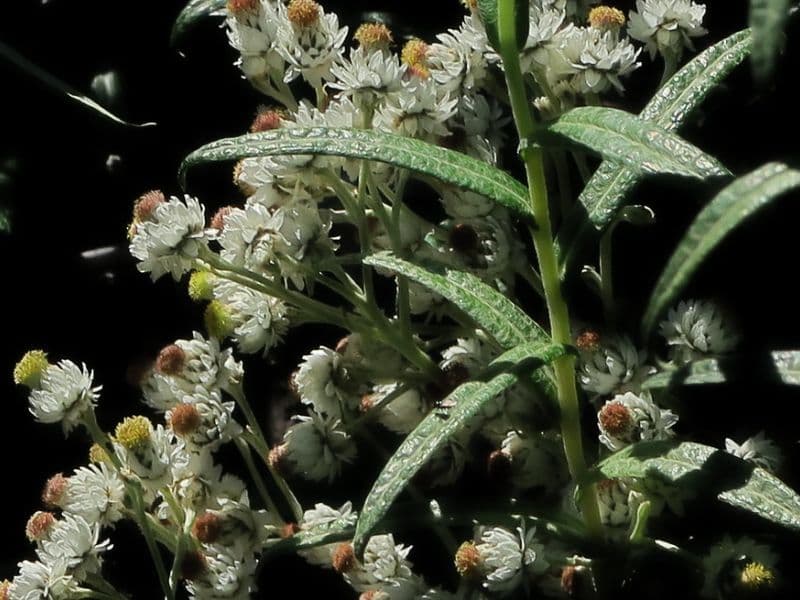
A. margaritacea grows erect up to about 90 centimetres (3 feet) tall, with narrow, alternate leaves up to 12.5 cm (5 inches). The undersides of the leaves are densely covered in tiny hairs. The stems are dry and brittle. The whitish to yellowish flower grows to about 6 millimetres (1⁄4 in) across as part of a corymb inflorescence, the most conspicuous part of which is the numerous pearly white bracts that surround the disc florets. It blooms between June and September.
The plant is dioecious, meaning the pollen-producing (male) and seed-producing (female) flowers are borne on separate plants.
Western pearly everlasting is sometimes grown by gardeners for its attractive foliage and modestly beautiful white blooms. They prefer a well drained soil, somewhat sandy and dry and with less organic matter. At least part sun conditions, if not full sun, are required for them to grow successfully. They can become somewhat aggressive spreaders in optimal conditions.
II. How to Grow and Care
Sunlight
Grow pearly everlasting in hot, sunny spots where it gets at least six hours of direct sun each day for best blooms and garden performance. It will tolerate partial shade but will bloom less and exhibit a tendency to flop over instead of maintaining its mounding habit.
Temperature and Humidity
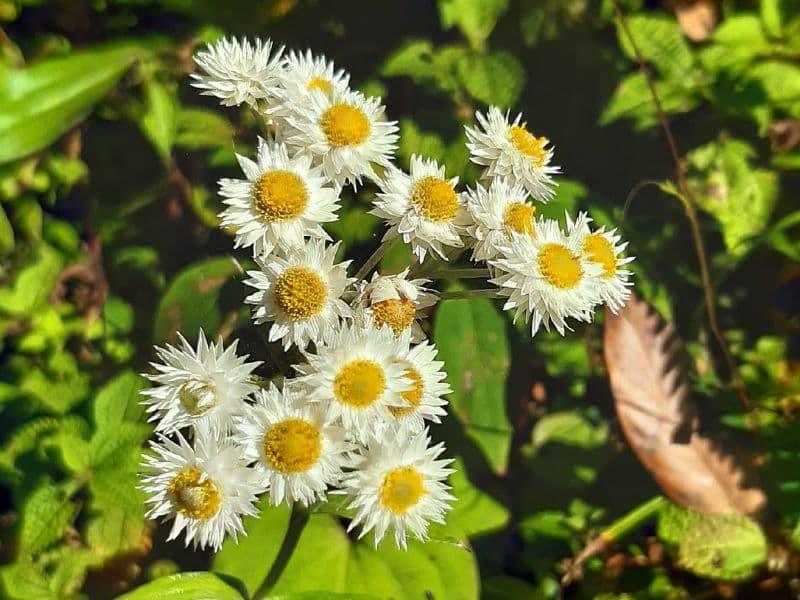
Pearly everlasting prefers dry, sunny climates and performs at its best between 32 and 90 degrees F. Humidity doesn’t affect the plant as long as it has adequate air circulation.
As a prairie native, it tolerates subzero temperatures in the winter without any special attention.
Soil and Water
Because pearly everlasting is native to poor, dry soils, it tolerates droughts and nutrient-deficient soil. That said, like most perennials, pearly everlasting grows and does best when watered regularly—especially during periods of drought or unseasonably hot weather. It also requires regular watering the first year after planting to help it get established in the garden and develop a strong root system.
Fertilizing
Pearly everlasting thrives in most growing conditions and does not need fertilizing to flourish. In fact, given its tendency to spread, feeding the plant is discouraged.
Planting Instructions
You can start pearly everlasting seeds directly in the garden in the fall or after the average last frost date in the spring. Lightly rake the planting site. Sow the tiny seeds on the soil surface as they need light to germinate. Keep them moist but not wet until seedlings emerge. The plant grows relatively quickly and may flower in its first year in the garden.
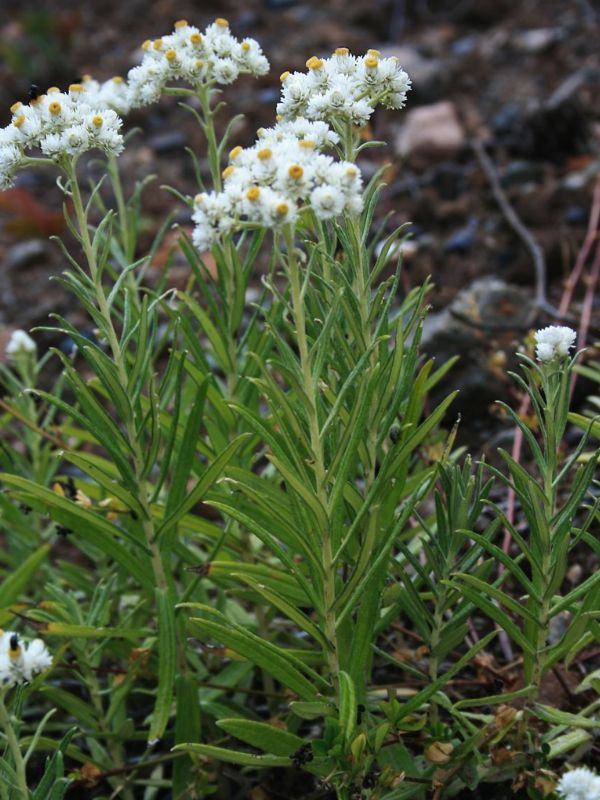
To plant nursery specimens in either spring or fall, dig a hole about the same width and depth as the planting container. Remove the plant and loosen the roots a bit from the root ball before placing it in the hole. Backfill with soil, tamp lightly, and water well.
Space multiple plants 18 to 24 inches apart to allow for adequate air circulation.
Pruning
A low-maintenance perennial, pearly everlasting doesn’t require much pruning. After it freezes in fall, you can cut it back to 3 or 4 inches tall or leave it standing for a little winter interest. Give it a trim in spring as new growth resumes. In fact, many gardeners find leaving the stems standing in winter and cutting them in early spring helps protect the newly emerging growth from hungry deer and rabbits.
Propagation
Propagate this herb by seed, cuttings, or division.
Division is the easiest method of propagation. Divide every 4 to 5 years in spring. Dig up an entire plant, divide it into sections, and replant in a suitable spot at the same depth as the original plant. Water well after planting.
To grow from cuttings: Fill a shallow tray with a lightly damped sterile seed-starting mixture. In spring, take basal cuttings. In the early summer, take cuttings from stem tips. Use sharpen bypass pruners to cut 4-inch-long plant cuttings with at least two sets of leaf nodes. Pinch off any flower buds and remove the lower leaves.
Plant the cut end of the stem in the pre-mixed seed-starter after dipping it in rooting hormone. Place it in bright indirect light or under grow lights. Rooting has succeeded when you see new growth. When roots are strong, transplant them to planters filled with potting mix or outdoors.
To grow from seed: Before planting seeds, store them in a cool, dry spot in a sealed container. They don’t need to be pretreated, but you can place them in a plastic bag inside the refrigerator for a few weeks, which may speed germination. To start seeds indoors, sow them 6 to 8 weeks before your average last frost date. Fill pots with moistened potting mix and sow seeds on the surface of the soil.
Cover with pots with plastic to maintain humidity. Keep the seeded pots warm (about 60 to 70 degrees F) and in indirect light. They should germinate within 14 to 28 days. Harden off when seedlings are about 2 inches tall.
Potting and Repotting
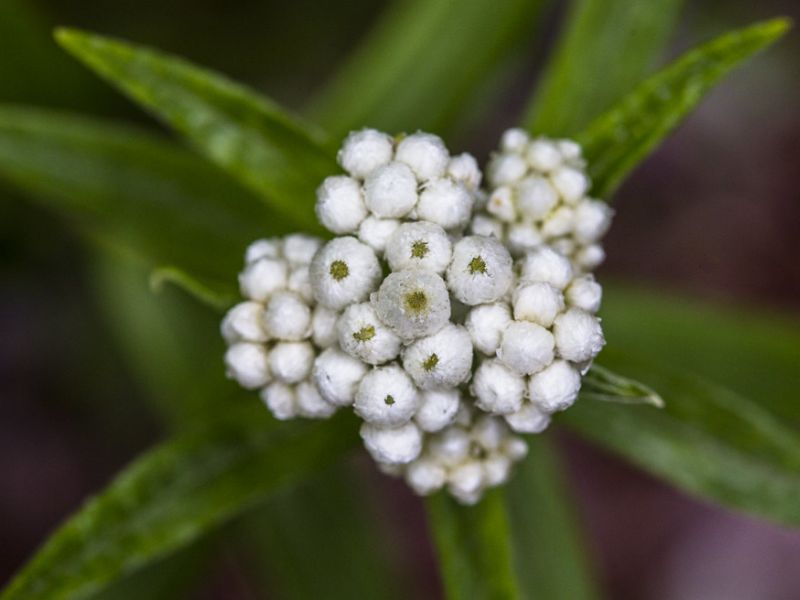
The plant makes a good container plant and it’s an ideal way to enjoy pearly everlasting without worrying about its tendency to spread rampantly. Select a pot with large drainage holes and use well-draining potting soil. Keep in mind that potted plants, unlike plants in the landscape, require more frequent watering and fertilization.
Repot the plant when it becomes rootbound. Choose a container that’s one size larger and fill with fresh potting soil. Remove the plant from its pot and tease the roots to loosen them. Place in the new container, backfill with soil and tamp down. Water well to remove any air pockets.
Despite its hardiness in areas with cold winters, when grown in pots, the roots of pearly everlasting are exposed to the cold. As a protective measure, winterize the pots by sinking the container into the ground. You can also place the container in a second, larger pot to create a planting silo that will insulate the roots from the cold.
Pests and Diseases
Pearly everlasting does not suffer from significant pest and disease issues. The herb may host butterfly larvae, so the plant is susceptible to chewing damage from hungry caterpillars.
Because it spreads by underground stems, pearly everlasting can be a bit of a thug in the garden and behave aggressively if you water regularly and fertilize abundantly. Consider where you’ll plant it and what its care regimen will be before adding it to your yard.
III. Uses and Benefits
- Ornamental uses
You should also consider pearly everlasting for your butterfly or pollinator garden. Many species of pollinators love its flowers, and it acts as a host plant for painted lady butterflies. In fact, planting host plants (the plants caterpillars eat) is a more effective strategy for attracting butterflies than planting flowers that produce a lot of nectar.
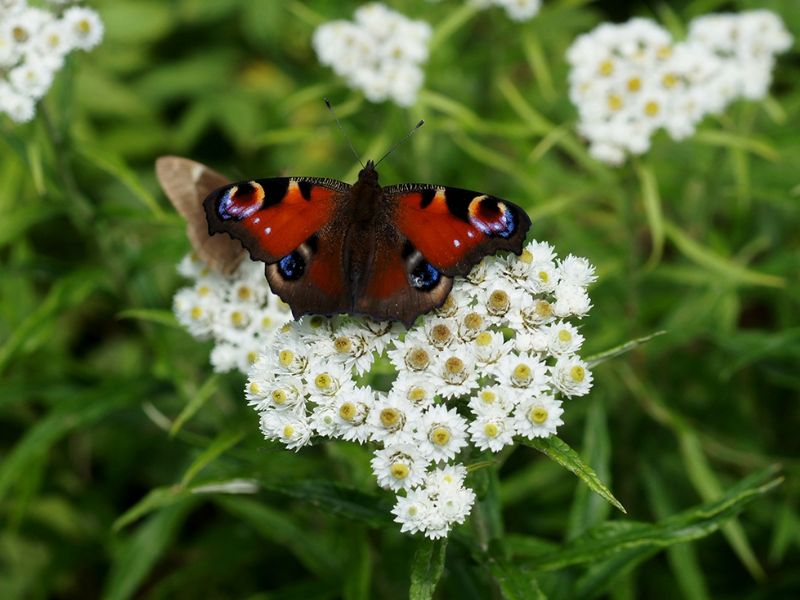
Add pearly everlasting to your herb or cutting garden, too. Its flowers last surprisingly long when cut for bouquets. If you prefer to use them for dried-floral crafts (such as wreaths and swags), hang the flowers upside down in a warm, dry place for a couple of weeks to dry. You can also use the dried flowers for decorative potpourri.
- Culinary uses
The leaves and young plants are edible when cooked.
IV. Types of Pearly Everlasting
- Common Pearly Everlasting
Common pearly everlasting (Anaphalis margaritacea var. cinnamomea) has wooly, white stems that support green-gray leaves covered in white hairs. The flowers are small and yellow surrounded by papery white bracts that dry exceptionally well. Zones 3-8
- Japanese Pearly Everlasting
The dark gray foliage of Japanese pearly everlasting (Anaphalis margaritacea var. yedoensis) is silver-edged and flowers are larger than the species. Zones 4-8
- Three-Veined Everlasting
Three-veined everlasting (Anaphalis triplinervis) grows to 3 feet tall and tolerates more moisture than the species. ‘Summer Snow’ is a popular dwarf variety that is good for edging. Zones 5-8
Find Where to Buy the Best Pearly Everlasting (Anaphalis margaritacea)

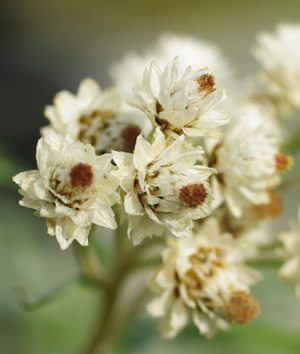


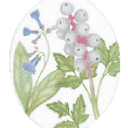



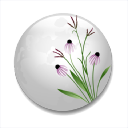









Leave a Reply